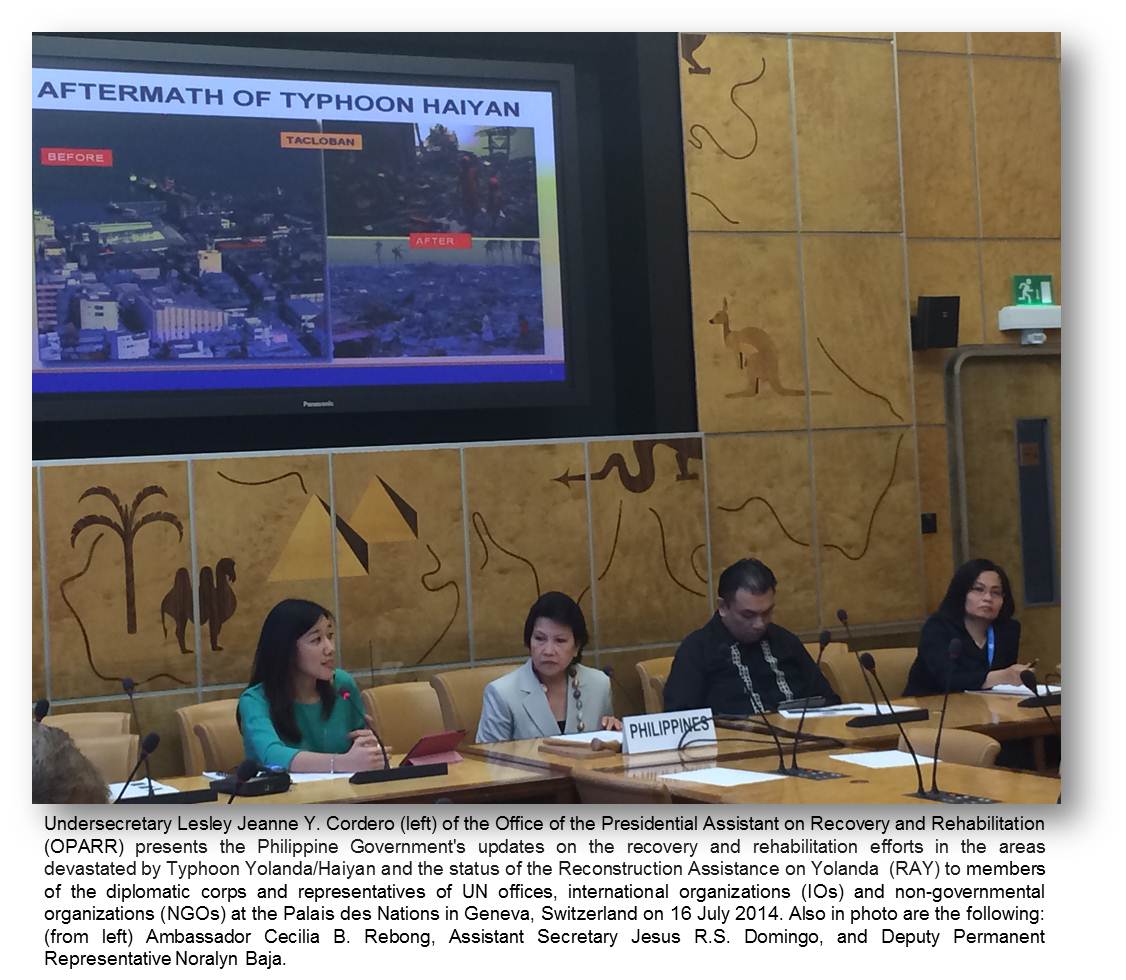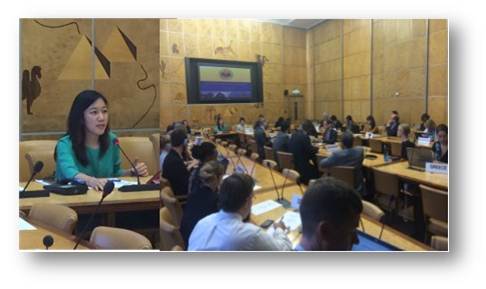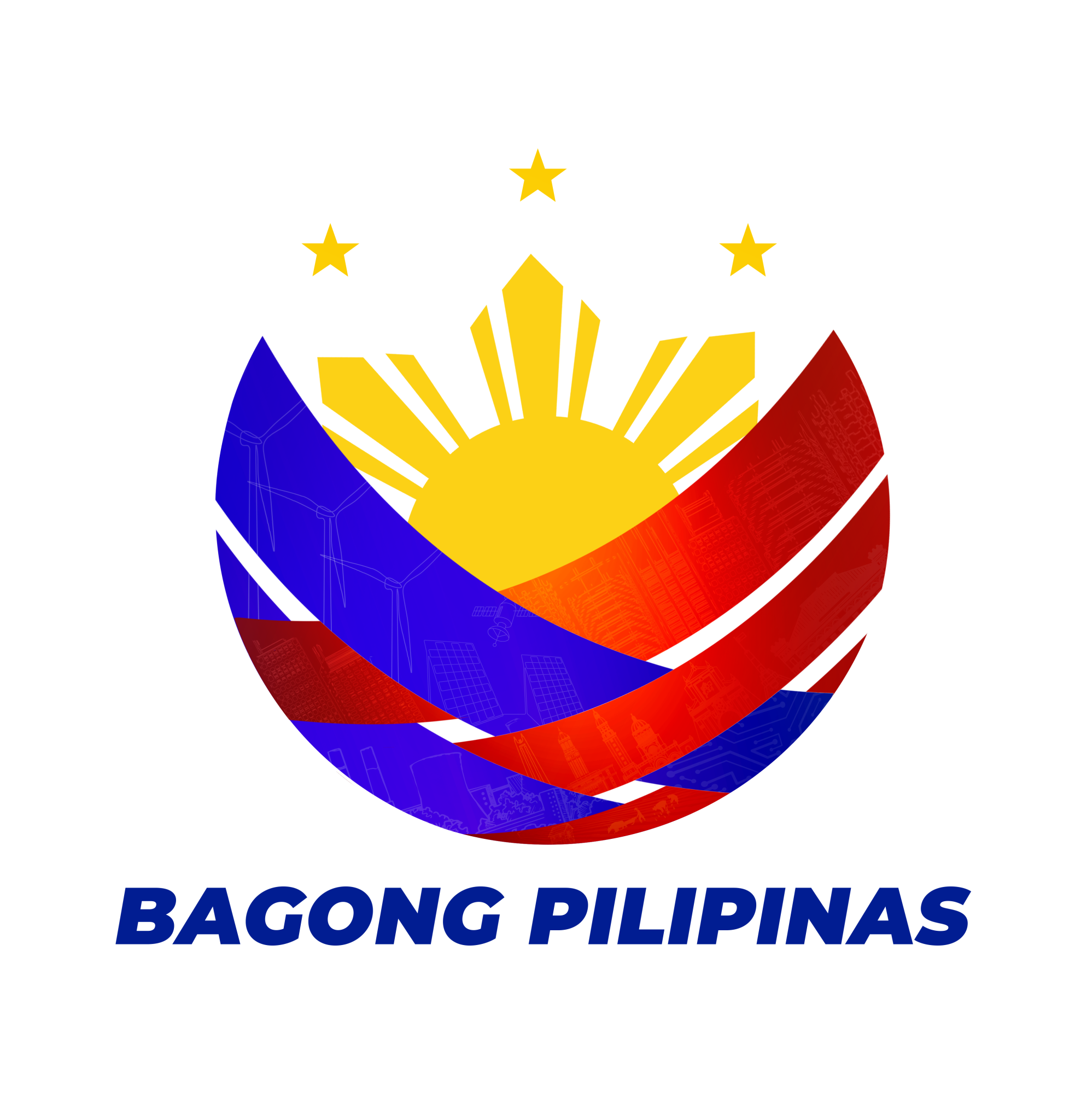
23 July 2014 - The Philippines underscored the importance of coordinating with different stakeholders in the rehabilitation and reconstruction of areas affected by Typhoon Yolanda/Haiyan.
In a briefing on July 16 to members of the diplomatic corps and representatives of United Nations offices, international organizations (IOs) and non-governmental organizations (NGOs), Office of the Presidential Assistant on Recovery and Rehabilitation (OPARR) Undersecretary Lesley Jeanne Y. Cordero presented the Philippine Government's updates on the recovery and rehabilitation efforts in the areas devastated by Typhoon Yolanda/Haiyan as well as the status of the Reconstruction Assistance on Yolanda (RAY).
To help rebuild the lives of the people affected by the typhoon, Undersecretary Cordero shared the government’s comprehensive rehabilitation plan. The plan which has five clusters – infrastructure (all infrastructure-related rehabilitation), resettlement (relocation of affected residents from unsafe zones), social services (transition from relief operations to early recovery and community services), livelihood (provision of livelihood assistance to affected families) and support (addressing cross-cutting policy concerns and issues) – were formed to facilitate the consolidation of the plans and programs of the Government for the affected areas.
 In terms of priorities, Undersecretary Cordero cited that the Philippines would like to achieve resiliency by “building back better faster and safer.” It is prioritizing the mainstreaming of disaster risk reduction (DRR) and disaster risk reduction management (DRRM) in all government agencies and plans and the need to use multihazard maps in order to identify safe zones. She also underlined that the Government is trying to invest in disaster preparedness and resilience, including capacitating local government units on disaster preparedness and mainstreaming of DRR in the curriculum of schools and universities.
In terms of priorities, Undersecretary Cordero cited that the Philippines would like to achieve resiliency by “building back better faster and safer.” It is prioritizing the mainstreaming of disaster risk reduction (DRR) and disaster risk reduction management (DRRM) in all government agencies and plans and the need to use multihazard maps in order to identify safe zones. She also underlined that the Government is trying to invest in disaster preparedness and resilience, including capacitating local government units on disaster preparedness and mainstreaming of DRR in the curriculum of schools and universities.
She also cited that the Philippines underscored the importance of coordinating with different stakeholders in the rehabilitation and reconstruction of areas affected by Typhoon Yolanda/Haiyan.
Recognizing the important role of the private sector, she mentioned that the Government is trying to put institutional mechanisms in order to manage a bigger group of private sector intervention in the rehabilitation plan.
Following President Benigno S. Aquino III’s good governance agenda, she also mentioned that similar to the Foreign Aid Transaparency Hub (FaiTH) website, an online mechanism called the Electronic Monitoring Platform for Accountability and Transparency Hub for Yolanda (EMPATHY) is also put up. EMPATHY will allow for monitoring of who is doing what, where and how much money is given and to which municipality, thus encouraging open reconstruction
We are highlighting the importance of getting the community involved in monitoring rehabilitation and reconstruction,” she emphasized.
She mentioned that last July 4, Department of Social Welfare and Development (DSWD) Secretary Corazon “Dinky” Soliman announced the end of the humanitarian phase and the formal turnover and transfer of responsibility of the rehabilitation efforts from DSWD to OPARR. “We are in the state of doing the full transition – from relief to rehabilitation phase,” she said.
Undersecretary Cordero was joined in the briefing by Ambassador Cecilia Rebong, Permanent Representative of the Philippines to the UN and other International Organizations in Geneva, Assistant Secretary for UN and other International Organizations Jesus R.S. Domingo, Deputy Permanent Representative to the UN and other International Organizations Noralyn Baja, Third Secretary Sharon Johnnette Agduma and Attache Hosanna Dela Cruz. END

